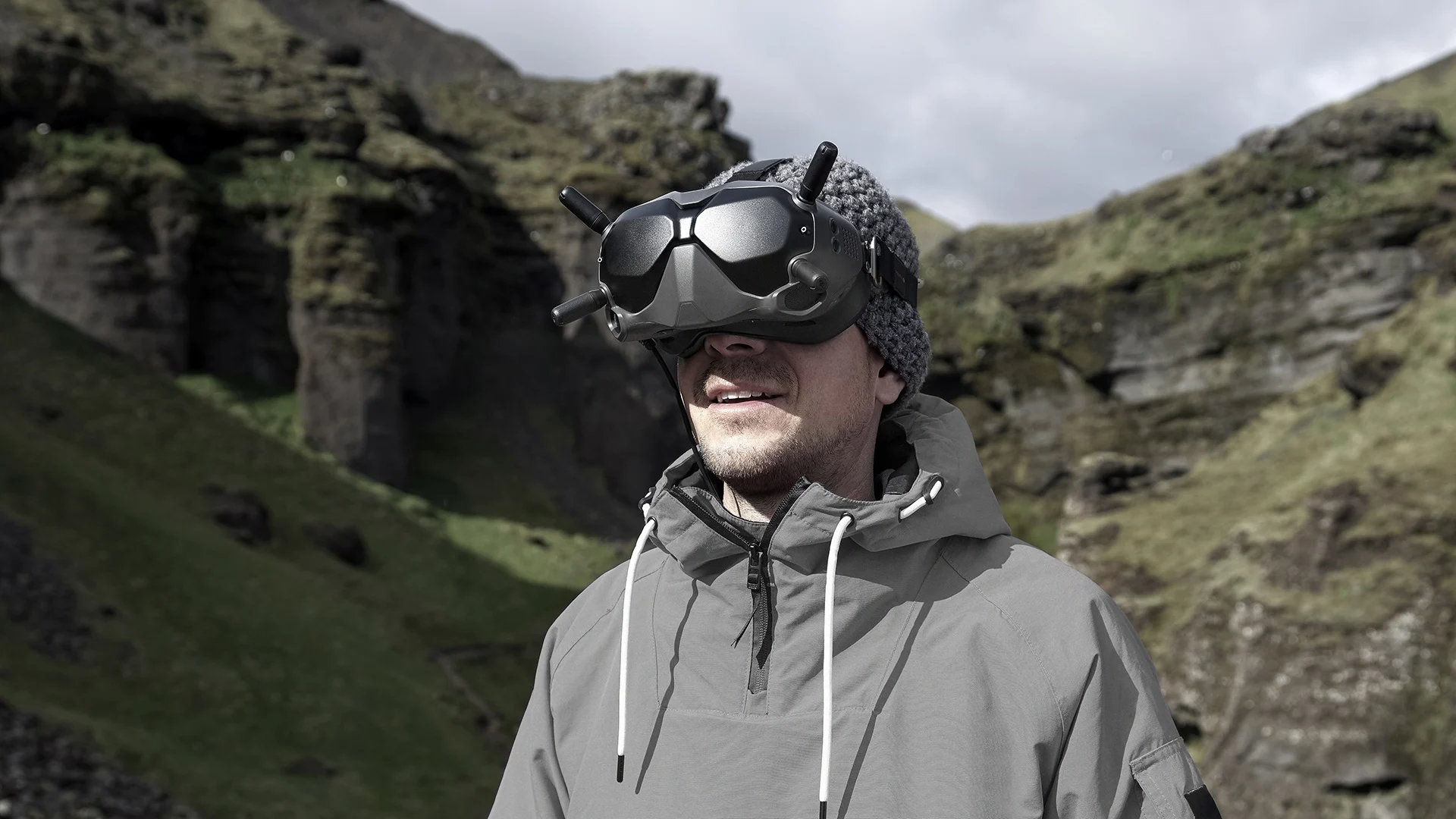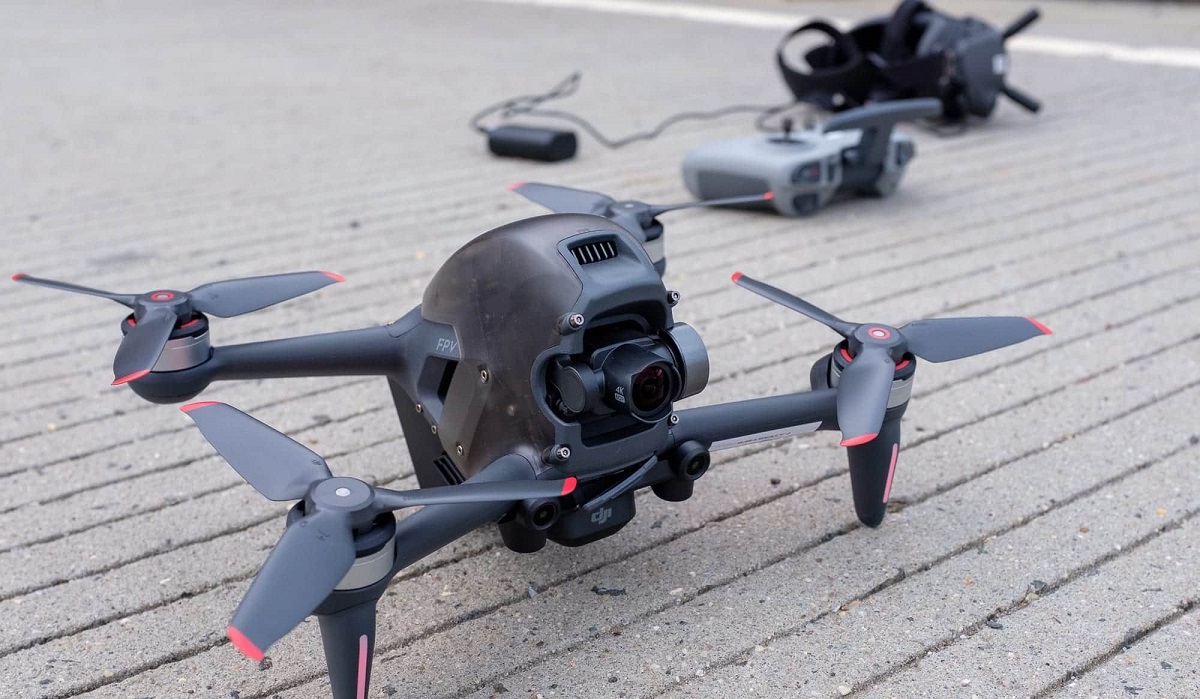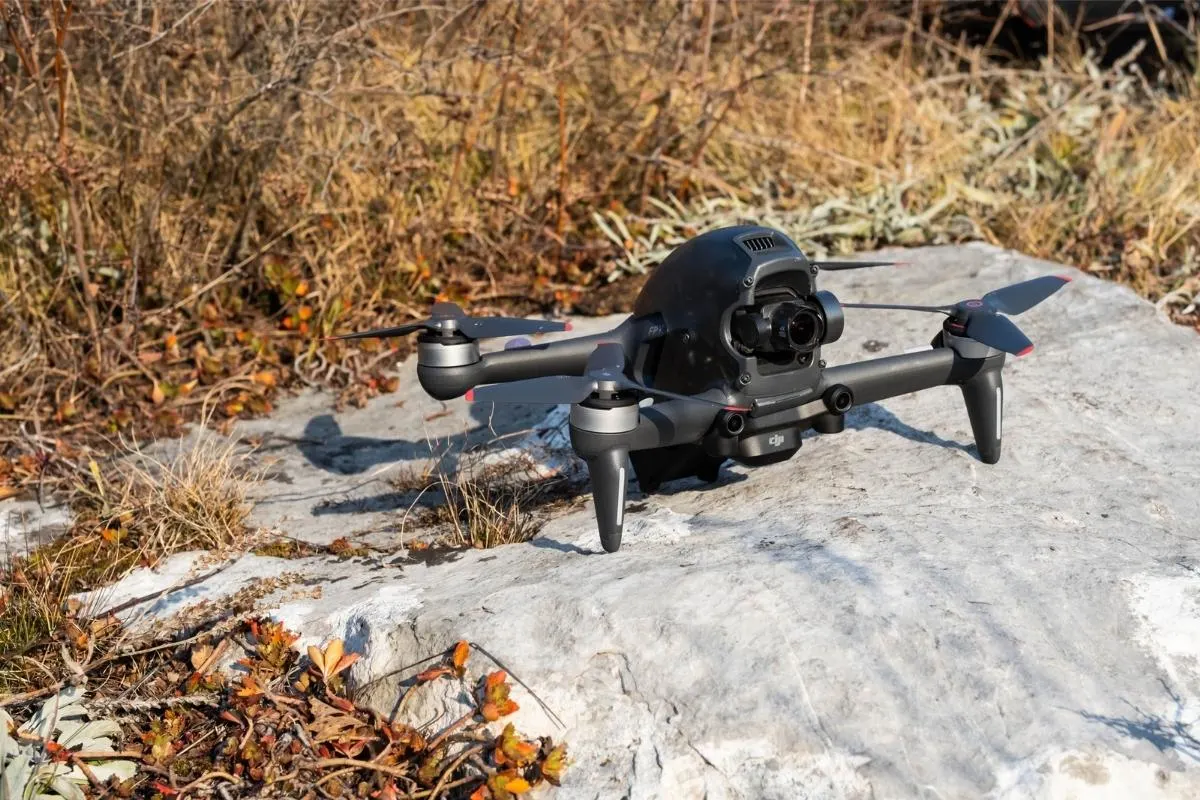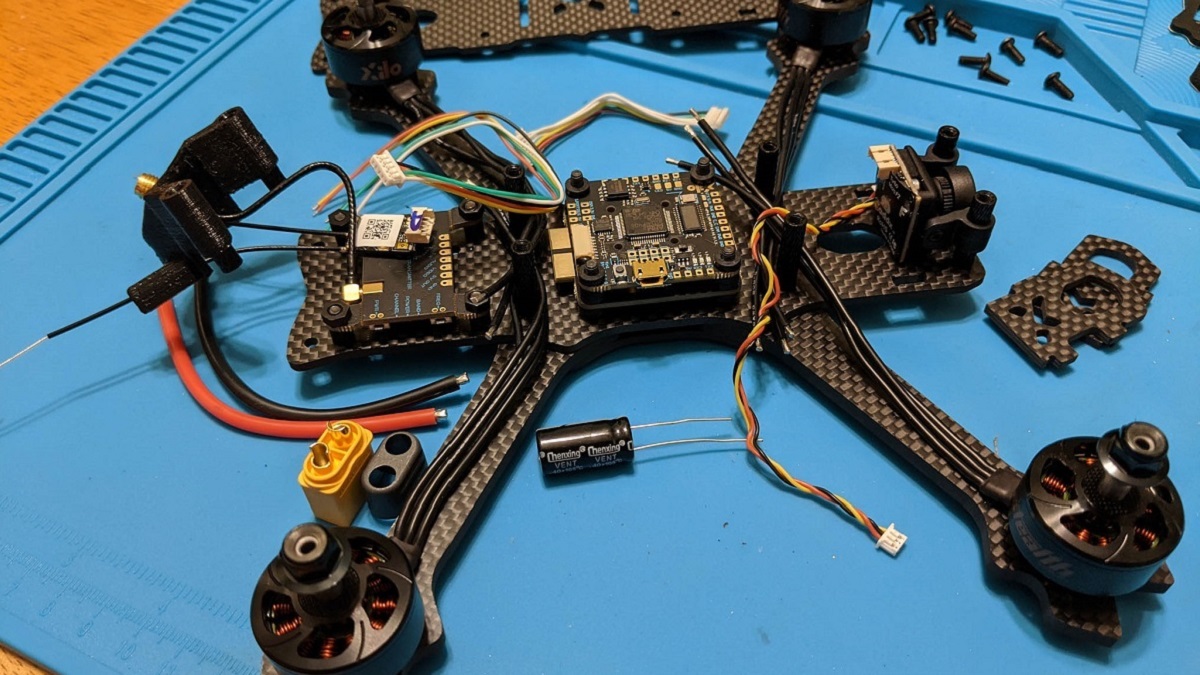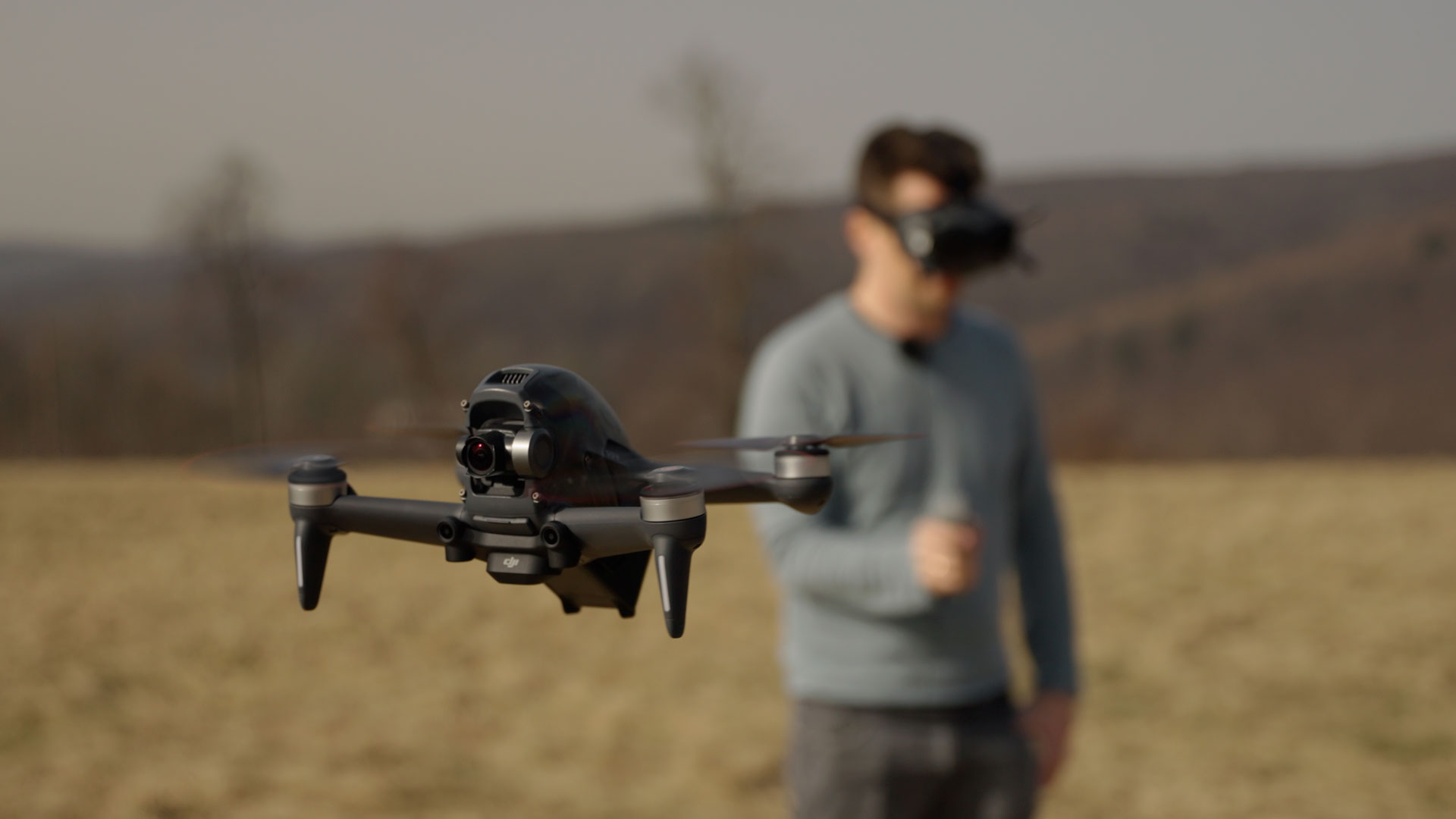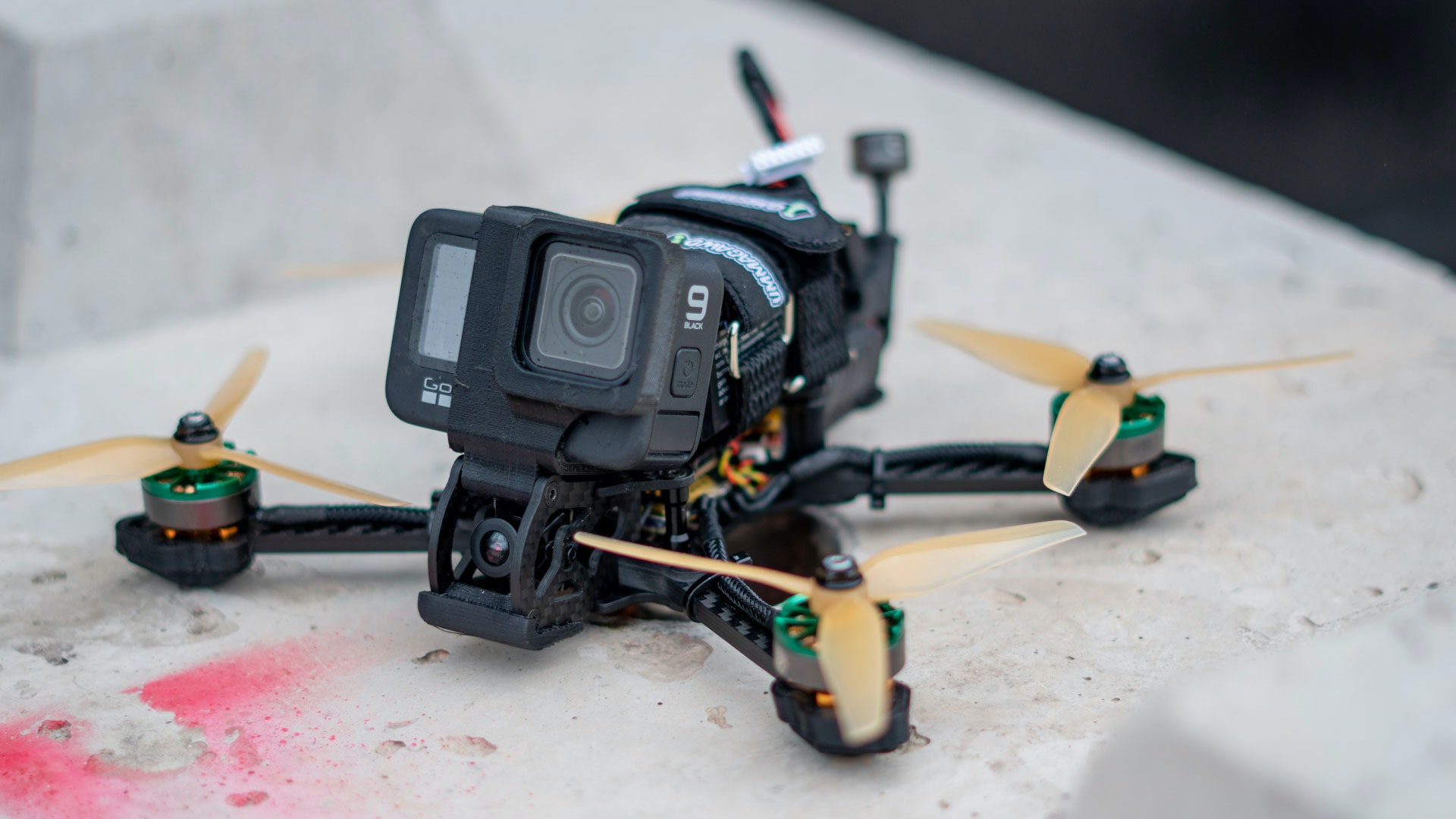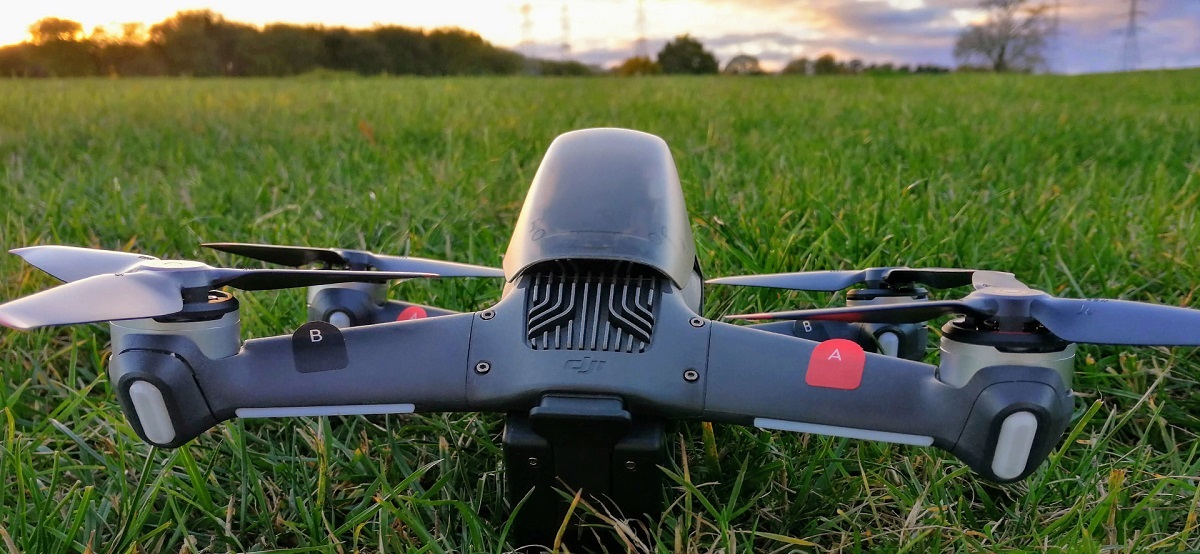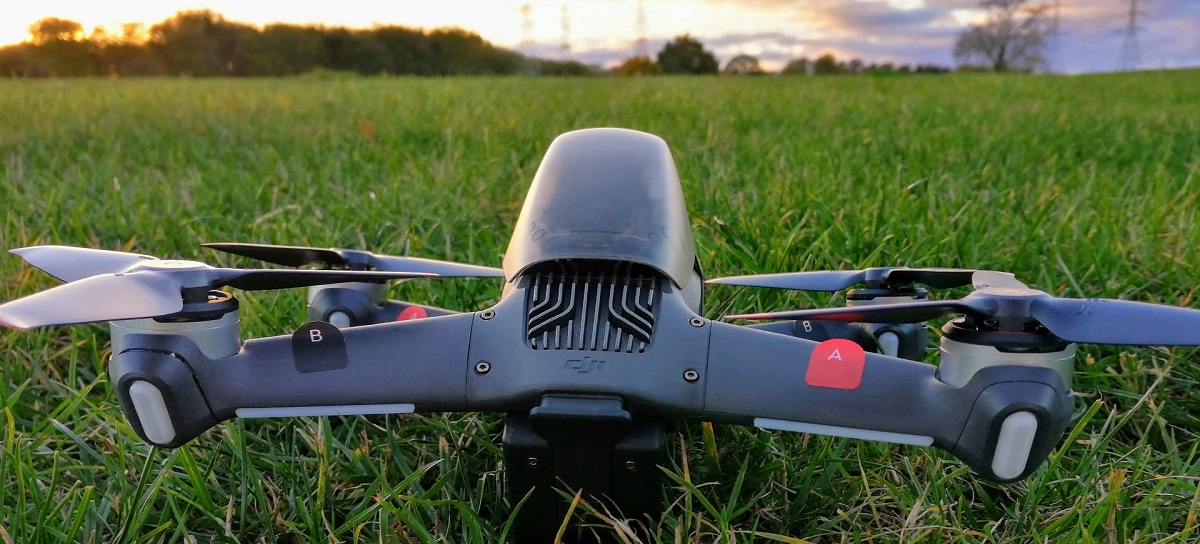Introduction
Welcome to the exciting world of FPV drone flying! If you’re a drone enthusiast looking to take your flying experience to new heights, FPV (First Person View) goggles are an essential accessory that can completely immerse you in the exhilarating experience of flying like a bird. In this article, we will guide you on how to connect goggles to your FPV drone, allowing you to see the world from a whole new perspective.
FPV drones have skyrocketed in popularity in recent years, thanks to advancements in technology that have made them more affordable and accessible. FPV allows you to see the live video feed from your drone’s camera, giving you a first-hand view as if you were sitting in the cockpit. This immersive experience allows for precise control and a thrilling flight experience.
When flying an FPV drone, goggles play a crucial role in providing a true first-person experience. These goggles resemble a virtual reality headset and provide a live video feed, directly streaming from the camera on your drone. They offer a wide field of view and help you navigate your drone with ease, as if you were flying inside it.
There are different types of goggles available in the market, ranging from entry-level models to professional-grade options packed with advanced features. Whether you’re a beginner or an experienced pilot, there is a pair of FPV goggles suitable for your needs.
In the following sections, we will guide you through the step-by-step process of connecting your goggles to your FPV drone. You will learn how to set up your drone, put on the goggles, and establish a connection between them. Let’s dive in and get you ready for an incredible FPV flying experience!
What is FPV Drone?
FPV (First Person View) drones are remote-controlled aircraft equipped with a camera that transmits a live video feed to the pilot through a set of goggles or a monitor. Unlike traditional drones, where the pilot relies solely on visual line of sight to navigate and control the aircraft, FPV drones enable the pilot to have an immersive and real-time view from the drone’s perspective.
With FPV drones, you can experience the thrill of flying like a bird, exploring the world from a unique aerial vantage point. The live video feed provides a first-person view, seamlessly integrating the pilot into the cockpit of the drone. This immersive experience allows for more precise and intuitive control, as if you are actually onboard the aircraft.
FPV drones are widely used in various fields including recreational flying, aerial photography and videography, racing, and search and rescue operations. These drones come in a range of sizes and designs, from small and agile racing drones to larger camera drones capable of capturing stunning aerial footage.
One of the key components of FPV drone flying is the FPV system, which consists of a camera mounted on the drone, a video transmitter, and a receiver connected to the goggles or monitor. The camera captures the live video feed from the drone’s perspective, while the video transmitter sends it wirelessly to the receiver. The receiver then displays the live video feed on the goggles or monitor, allowing the pilot to see what the drone sees in real time.
FPV drone flying offers a unique and exhilarating experience, giving pilots the ability to explore environments and capture footage from angles that were previously impossible. Whether you’re a hobbyist looking for a new adventure or a professional photographer seeking a creative edge, FPV drones open up a world of possibilities.
In the next section, we will delve deeper into the essential component of FPV drone flying – the goggles. We will explore the different types of goggles available and how they enhance the FPV experience. So let’s dig in and discover the world of FPV goggles!
What are Goggles in FPV Drone?
In the world of FPV drone flying, goggles play a crucial role in providing an immersive and realistic flying experience. FPV goggles resemble a virtual reality headset and are used to view the live video feed transmitted from the drone’s camera. They allow pilots to see what the drone sees, creating a first-person perspective that enhances control and navigation.
FPV goggles are designed to optimize the viewing experience by offering a wide field of view, high-resolution displays, and low latency transmission. The wide field of view helps pilots to see a broader vista, while the high-resolution displays ensure that the video feed is sharp and detailed. Low latency transmission minimizes lag, ensuring that there is minimal delay between the drone’s movements and what the pilot sees in the goggles.
There are various types of goggles available in the market, ranging from entry-level models to high-end professional-grade options. Entry-level goggles are typically more affordable and user-friendly, making them a popular choice for beginners or those on a budget. They may have more basic features but still provide a satisfactory FPV experience.
On the other hand, professional-grade goggles are geared towards experienced pilots, offering advanced features such as adjustable focal length, customizable settings, and integrated DVR (Digital Video Recorder) to record flight footage. These high-end goggles are capable of delivering superior image quality, exceptional comfort, and advanced features that cater to the needs of professional users.
When choosing goggles, it’s important to consider factors such as comfort, weight, battery life, compatibility with your drone, and the quality of the display. Comfort is especially crucial since longer flight sessions can become uncomfortable if the goggles are not properly designed. Additionally, finding goggles that suit the size and shape of your head is essential for a secure and comfortable fit.
Lastly, some goggles offer additional features like head tracking, which allows the pilot to control the drone’s camera orientation by simply moving their head. This feature adds an extra level of immersion and control to the FPV experience.
As technology advances, the market continues to introduce new goggles with improved capabilities and features. It’s essential to stay updated with the latest advancements and find goggles that best suit your needs and budget. Now that we have explored the importance of goggles in FPV drone flying, let’s move on to the next section, where we’ll guide you through the process of connecting your goggles to your FPV drone!
Types of FPV Goggles
When it comes to FPV drone flying, there are several types of goggles available in the market, each offering different features and capabilities. Understanding the different types will help you make an informed decision and choose the goggles that best suit your needs and preferences. Let’s explore the main types of FPV goggles:
- Entry-level Goggles: Entry-level goggles are designed for beginners or those on a budget. They offer a basic set of features and tend to be more affordable. These goggles are user-friendly and provide a satisfactory FPV experience. While they may not have all the advanced features of higher-end models, they can still provide an immersive and enjoyable flying experience.
- Mid-range Goggles: Mid-range goggles offer a balance between affordability and features. They typically provide higher resolution displays, wider field of view, and lower latency compared to entry-level goggles. Mid-range goggles are suitable for pilots who want an improved FPV experience without breaking the bank. These goggles often come with additional features like adjustable focal length and customizable settings.
- Professional-grade Goggles: Professional-grade goggles are designed for experienced pilots or those looking for top-of-the-line features and performance. These high-end goggles offer superior image quality, exceptional comfort, and advanced features. They come equipped with high-resolution displays, wider field of view, low latency transmission, and integrated DVR to record flight footage. Professional-grade goggles often have customizable settings, multiple antenna inputs, and advanced head tracking capabilities.
- Digital Goggles: Digital goggles are a relatively newer development in the FPV market. Unlike traditional analog goggles that receive an analog video signal, digital goggles are designed to receive a digital video signal. Digital goggles offer higher-resolution video transmission, reduced signal interference, and improved image quality compared to analog goggles. However, digital goggles tend to be more expensive, and compatibility with digital systems is essential.
- Box Goggles: Box goggles, also known as viewer goggles or FPV monitors, are an alternative to the traditional goggle-style FPV goggles. As the name suggests, they resemble a box-shaped visor that you wear on your head. Box goggles typically have a larger display, providing a more immersive experience. They are an ideal option for pilots who prefer a larger screen size and a more open form factor.
It’s important to consider factors such as comfort, weight, resolution, latency, compatibility, and budget when selecting FPV goggles. Each type of goggles has its own advantages and limitations, so it’s crucial to assess your needs and flying style to find the perfect fit. Now that you’re familiar with the different types of FPV goggles, let’s move on to the next section, where we’ll discuss the step-by-step process of connecting your goggles to your FPV drone!
Steps to Connect Goggles to FPV Drone
Connecting your goggles to your FPV drone is a straightforward process, but it’s important to follow the correct steps to ensure a proper connection and optimal viewing experience. Here’s a step-by-step guide to help you connect your goggles to your FPV drone:
- Step 1: Turn on your FPV Drone: Start by turning on your FPV drone and ensuring that it is fully powered up. Make sure your drone’s battery is charged and properly inserted.
- Step 2: Put on your FPV Goggles: Put on your FPV goggles and adjust the straps for a comfortable and secure fit. Ensure that the goggles are positioned correctly on your head to provide a clear view.
- Step 3: Connect the Goggles to the FPV System: Locate the video receiver on your goggles and connect it to the video output on your FPV drone. This connection can be made using an AV cable or an HDMI cable, depending on the compatibility between your drone and goggles. Ensure that the cables are securely connected.
- Step 4: Adjust the Goggles for Optimal Viewing: Once the connection is established, adjust the settings on your goggles to enhance the viewing experience. Depending on the specific model of your goggles, you may have options to adjust the brightness, contrast, and field of view. Experiment with these settings to find the optimal configuration for your preferences.
- Step 5: Fly Your FPV Drone with the Goggles: With the goggles connected and adjusted, you’re ready to take to the skies! Use the control sticks on your drone’s remote controller to navigate and control the flight of the drone. As you maneuver the drone, the live video feed from the drone’s camera will be transmitted to your goggles, providing you with a first-person view as if you were inside the drone.
Remember to fly your drone in a safe and responsible manner, following all regulations and guidelines set by your local aviation authorities. It’s essential to maintain a clear line of sight with your drone and avoid flying in restricted areas or near airports.
By following these steps, you can connect your goggles to your FPV drone and experience the thrill of flying from a first-person perspective. Enjoy the incredible aerial views and the immersive flight experience that FPV drone flying provides!
Step 1: Turn on your FPV Drone
In order to connect your goggles to your FPV drone, the first step is to turn on your drone. This ensures that the drone’s systems are powered up and ready to establish a connection with the goggles.
Before turning on your drone, make sure that the battery is fully charged and properly inserted. Ensure that the drone’s power switch is in the “off” position before connecting the battery. This ensures a safe and controlled power-up process.
Once you have confirmed that everything is in order, it’s time to turn on your FPV drone. Locate the power switch on the drone, which is typically located on the main body or near the battery compartment. Flip the switch to the “on” position and wait for the drone’s systems to initialize.
While the drone is powering up, be sure to keep it on a stable and level surface. This ensures that the flight sensors calibrate properly and prevents any accidental movement or interference during startup.
Depending on the model of your drone, it may have indicator lights that provide visual feedback on the status of the drone’s systems. Pay attention to these lights, as they can help you confirm that the drone is powered up and ready for flight.
It’s important to note that you should always follow the manufacturer’s instructions regarding the startup process for your specific drone model. Different drones may have varying power-up sequences or additional steps that need to be followed.
By correctly turning on your FPV drone, you lay the foundation for a successful connection with your goggles. With the drone powered up and ready to go, you can proceed to the next step of putting on your goggles and establishing the connection between the goggles and the drone’s FPV system.
Step 2: Put on your FPV Goggles
After turning on your FPV drone, the next step is to put on your FPV goggles. These goggles are designed to provide an immersive first-person view experience, allowing you to see the live video feed from your drone’s camera. Putting on the goggles properly ensures a comfortable fit and optimal viewing experience.
Start by adjusting the straps on the goggles to fit your head comfortably. The straps should be tight enough to keep the goggles secure, but not so tight that they cause discomfort or restrict blood flow. Ensure that the goggles are positioned in a way that provides a clear view and blocks out any external light.
Before putting on the goggles, make sure that the lens or screen inside the goggles is clean and free from any smudges or dirt. Use a soft cloth to gently clean the lens, ensuring that you have a clear view of the video feed.
When putting on the goggles, make sure that they are centered on your face and aligned properly with your eyes. Adjust the straps as necessary to achieve a snug fit. If your goggles have adjustable IPD (Interpupillary Distance), set it to match your own eye width for optimal viewing comfort. This will help eliminate any double vision and improve the clarity of the video feed.
Once you have put on the goggles, take a moment to ensure that you have a clear view of the screen or lenses. Adjust the position of the goggles on your face and tighten or loosen the straps if necessary. You want to achieve a comfortable fit that allows you to see the video feed clearly without any strain or discomfort.
It’s important to note that once you put on the goggles, your peripheral vision will be restricted. Be cautious of your surroundings and avoid any potential obstacles or hazards. It’s also a good idea to have a spotter or assistant nearby to help keep an eye on your surroundings while you’re focused on flying the drone.
By properly putting on your FPV goggles, you’re ready to move on to the next step of connecting the goggles to the FPV system of your drone. With the goggles in place, you’re about to experience the thrill of flying from a first-person perspective!
Step 3: Connect the Goggles to the FPV System
Now that you have your FPV drone turned on and your goggles securely in place, it’s time to establish the connection between the goggles and the FPV system of your drone. This step is crucial for receiving the live video feed from your drone’s camera and experiencing the immersive first-person view.
Start by locating the video receiver on your goggles. Depending on the model of your goggles, the video receiver may be built into the goggles or come as a separate module. Familiarize yourself with the location of the video receiver and any other necessary ports or connections.
Next, you’ll need to find the video output on your FPV drone. This is usually located on the drone’s main body or near the camera. The video output may be in the form of an AV (audio-video) port or an HDMI port, depending on the specific configuration of your drone.
Once you’ve identified the video output on your drone, you can proceed to connect the goggles to the FPV system. Use an appropriate cable – such as an AV cable or an HDMI cable – to establish the connection between the video output on the drone and the video input on the goggles. Ensure that the cables are securely plugged into their respective ports.
It’s important to double-check that you’ve connected the cables correctly. In the case of AV cables, make sure you’ve matched the colors of the plugs and ports – yellow for video and white/red for audio. For HDMI cables, ensure that you’ve connected the correct ends of the cable to the drone and goggles.
Once the connection is established, you should see the live video feed from your drone’s camera appear on the screen or lenses of your goggles. Take a moment to verify that the video feed is clear and stable, without any interference or distortion.
If you’re having trouble establishing a connection or experiencing issues with the video feed, double-check the cables and ensure that they’re securely plugged in. You may also want to check the settings on your goggles to ensure that the correct video input is selected.
With the goggles successfully connected to the FPV system, you’re one step closer to an immersive flying experience. In the next step, we’ll discuss how to adjust the goggles for optimal viewing and comfort, ensuring that you get the most out of your FPV flight.
Step 4: Adjust the Goggles for Optimal Viewing
Now that you have connected your goggles to the FPV system of your drone, it’s time to adjust them for optimal viewing. Proper adjustment ensures that you can comfortably see the live video feed from your drone’s camera, allowing for an immersive and enjoyable flying experience.
Start by adjusting the brightness and contrast settings of your goggles, if available. These settings can help enhance the clarity and visibility of the video feed. Experiment with these settings to find the balance that works best for you and the lighting conditions in which you’ll be flying.
You may also find that adjusting the field of view (FOV) settings on your goggles can enhance your viewing experience. By widening or narrowing the field of view, you can customize the perspective and depth perception while flying. However, be mindful that extreme FOV adjustments could result in a distorted or fish-eye effect.
Take a moment to adjust the position of the goggles on your face as well. Make sure they are centered and properly aligned with your eyes. Adjust the straps to achieve a snug fit that is comfortable, yet secure enough to prevent the goggles from shifting during flight.
If your goggles have a diopter adjustment feature, use it to fine-tune the focus of the optics to match your vision. This adjustment can help individuals with varying degrees of visual acuity achieve a sharper and clearer image.
It’s important to note that everyone’s preferences for optimal viewing may vary. Take the time to experiment with different settings and adjustments until you find what works best for you. Be mindful that prolonged use of goggles may cause eye fatigue, so take breaks if needed and stay hydrated.
Once you have adjusted the goggles to your liking, take a moment to test the video feed by moving your head slightly. Ensure that the image remains stable and clear, without any lag or distortion. If you experience any issues with the video feed, check the connection between the goggles and the FPV system, and verify that the drone’s camera is functioning properly.
By adjusting the goggles for optimal viewing, you are now ready to embark on your FPV flight adventure. The next step will guide you on how to use the goggles to fly your drone and experience the thrill of FPV flying firsthand.
Step 5: Fly Your FPV Drone with the Goggles
With your goggles properly adjusted and the video feed from your drone’s camera streaming, it’s time to take to the skies and fly your FPV drone using the immersive first-person view. This step-by-step guide will help you navigate your drone confidently and make the most of your FPV flying experience.
Begin by familiarizing yourself with the controls on your drone’s transmitter. Take note of the sticks or buttons responsible for throttle (vertical movement), yaw (horizontal rotation), pitch (forward and backward movement), and roll (sideways movement). These controls allow you to maneuver your drone with precision and finesse.
Start off with gentle movements to get accustomed to the controls. Gradually increase the throttle to lift the drone off the ground and hover at a low altitude. Use the yaw control to rotate the drone and get a sense of the surrounding area. Pay attention to any obstacles or hazards that may be in your flight path.
As you become more comfortable, gradually increase the speed and altitude of your drone. Use the pitch and roll controls to fly forward, backward, left, or right. Take your time to practice different flight maneuvers, such as figure eights, circles, and altitude changes, to further refine your flying skills.
While flying, maintain situational awareness and be mindful of your drone’s battery life. Most FPV goggles provide a battery indicator, allowing you to monitor the remaining power. It’s important to land your drone safely before the battery drains completely and to avoid any sudden loss of power during flight.
Keep in mind that FPV flying can be exhilarating, but it’s crucial to fly responsibly and follow local rules and regulations. Fly in areas designated for drone flight, avoid flying over private property without permission, and respect the privacy of others. Maintain a clear line of sight with your drone and be cautious of potential obstructions or hazards in your flight path.
Remember that FPV drone flying is both a skill and an art that requires practice and patience to master. Take the time to practice regularly and continuously develop your flying skills, and you will gradually become more confident and proficient in navigating your drone using the goggles.
Enjoy the incredible sensation of flight and the unique perspective that FPV goggles provide. Capture stunning aerial footage, explore new areas, and embrace the freedom and creativity that FPV flying offers. But above all, fly safely and responsibly, and savor every moment of your FPV drone flight with the goggles!
Conclusion
Connecting goggles to your FPV drone opens up a whole new world of immersive and thrilling flying experiences. By following the steps outlined in this guide, you can easily connect your goggles and enjoy the exhilaration of flying like a bird from a first-person perspective.
Throughout this article, we explored the concept of FPV drones and the importance of goggles in providing a realistic and captivating view of your drone’s flight. We discussed the different types of goggles available in the market, ranging from entry-level models to professional-grade options packed with advanced features.
Additionally, we provided a step-by-step guide on connecting your goggles to your FPV drone. We covered the process of turning on your drone, putting on your goggles, and establishing the essential connection between the goggles and the FPV system of your drone. We also discussed how to adjust the goggles for optimal viewing and comfort, ensuring a clear and enjoyable flight experience.
Once you have successfully connected your goggles, you are ready to fly your FPV drone with confidence and excitement. Take the time to master the controls, practice different flight maneuvers, and explore the unique perspective that FPV flying offers. Remember to always fly responsibly, follow local drone regulations, and respect the privacy of others.
Whether you are a beginner starting your FPV journey or an experienced pilot looking to enhance your flying experience, goggles are an indispensable accessory. They allow you to see the world from a whole new perspective, immersing you in the thrill of FPV drone flying.
So go ahead, put on your goggles, connect them to your FPV drone, and take flight. Explore the skies, capture breathtaking footage, and experience the freedom of FPV flying like never before. Embrace the adventure and embrace the world of FPV with your goggles!







